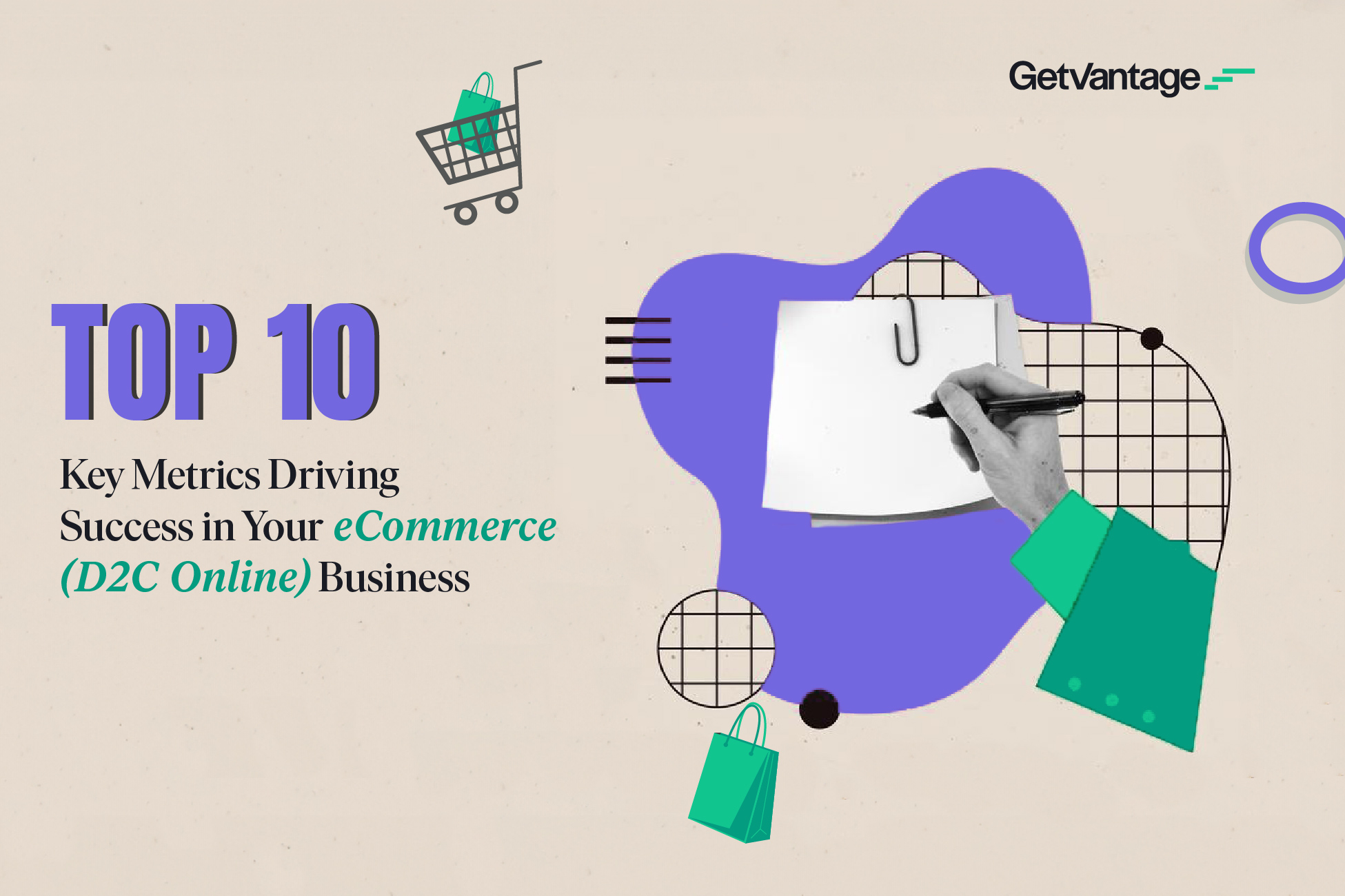Have you ever wondered what powers the success of an eCommerce business? It all comes down to the numbers. At GetVantage, we believe that knowing and optimizing these key metrics can be the difference between thriving or struggling in the online marketplace. Let’s explore the top 10 metrics that can transform your business.
The Most Important Numbers to Track
1. Customer Acquisition Cost (CAC)
- What it is: The total cost associated with acquiring a new customer.
- Why it matters: High CAC can eat into your profits, making it essential to optimize and reduce acquisition costs over time.
- How to calculate: Total marketing expenses / Number of new customers acquired
2. Conversion Rate (CR)
- What it is: The percentage of website visitors who complete a purchase.
- Why it matters: Higher conversion rates reflect effective marketing, strong offers, and a smooth customer experience.
- How to calculate: (Number of sales / Number of visitors) x 100
3. Average Order Value (AOV)
- What it is: The average amount customers spend per order.
- Why it matters: Increasing AOV can boost revenue without needing to acquire new customers.
- How to calculate: Total revenue / Number of orders
4. Customer Lifetime Value (CLTV)
- What it is: The predicted total revenue a customer will generate over their relationship with your business.
- Why it matters: CLTV helps you focus on long-term customer retention and profitability.
- How to calculate: AOV x Number of repeat sales x Customer lifespan
5. Gross Margin
- What it is: The difference between revenue and the cost of goods sold (COGS).
- Why it matters: Gross margin reflects the profitability of your products.
- How to calculate: (Total revenue – COGS) / Total revenue x 100
6. Cart Abandonment Rate
- What it is: The percentage of customers who abandon their carts before completing a purchase.
- Why it matters: A high abandonment rate signals issues in the checkout process that need to be addressed.
- How to calculate: (Number of abandoned carts / Number of initiated transactions) x 100
7. Refund and Return Rate
- What it is: The percentage of products returned or refunded.
- Why it matters: High return rates can indicate product quality or service issues.
- How to calculate: (Number of returns / Number of sales) x 100
8. Return on Investment (ROI)
- What it is: A measure of the profitability of your business investments.
- Why it matters: It helps evaluate the effectiveness of your investments, allowing you to focus on strategies that yield the highest returns.
- How to calculate: (Net profit / Total investment) x 100
9. Traffic Sources
- What it is: Where your website traffic is coming from (e.g., organic search, paid ads, social media).
- Why it matters: Understanding traffic sources helps optimize marketing strategies and increase efficiency.
- How to measure: Use tools like Google Analytics to track traffic sources.
10. Net Promoter Score (NPS)
- What it is: A measure of customer satisfaction and loyalty.
- Why it matters: High NPS scores signal strong brand loyalty, while low scores highlight areas for improvement.
- How to calculate: % of Promoters – % of Detractors (from customer surveys)
Why these metrics matter for your eCommerce business
Tracking these metrics is crucial for the success of your business. Here’s why:
- Data-Driven Decisions: Make informed choices that enhance business strategies and outcomes.
- Boosted Conversion Rates: Identify and address bottlenecks in your sales funnel to convert more visitors into buyers.
- Optimized Customer Acquisition: Reduce CAC by targeting the right marketing channels.
- Streamlined Marketing Efforts: Allocate budgets to high-performing campaigns for maximum ROI.
- Reduced Cart Abandonment: Improve checkout processes to increase completed transactions.
- Smarter Inventory Management: Avoid overstocking or stockouts by tracking sales trends.
- Accurate Financial Forecasting: Predict future revenue and expenses with greater accuracy for better planning.
Where metrics meet the customer journey
1. Awareness: The customer discovers your brand through ads, social media, or word-of-mouth.
2. Consideration: They evaluate your offerings against competitors by visiting your site or signing up for updates.
3. Decision: They add items to the cart and complete the purchase.
4. Retention: Post-purchase follow-ups, support, and satisfaction surveys help build loyalty.
5. Advocacy: Loyal customers leave positive reviews and refer others.
By understanding and optimizing these metrics, you’ll be equipped to make strategic decisions that fuel your business’s growth and profitability.





